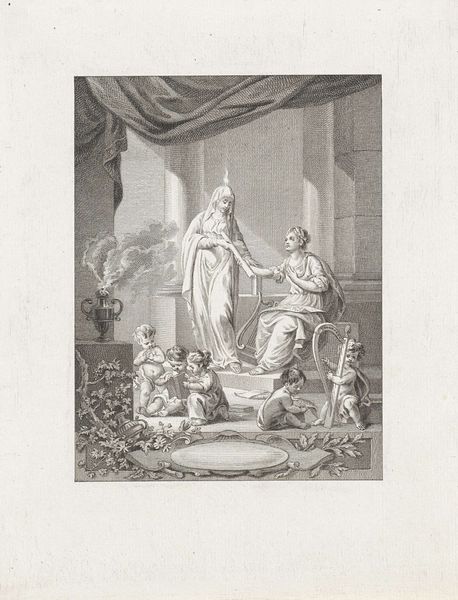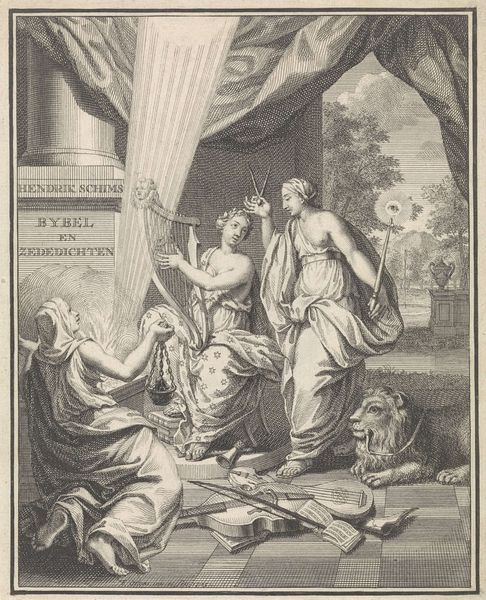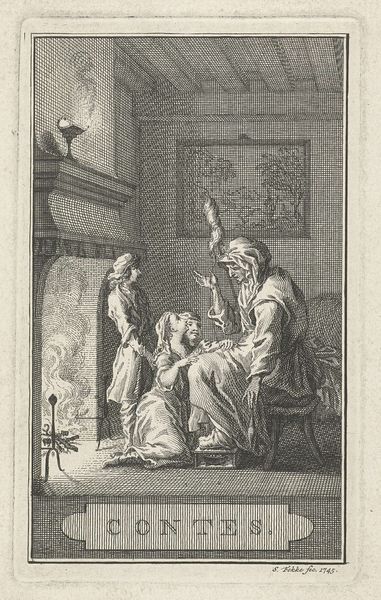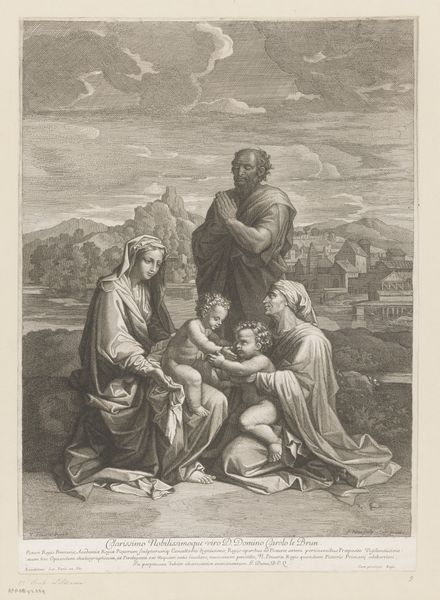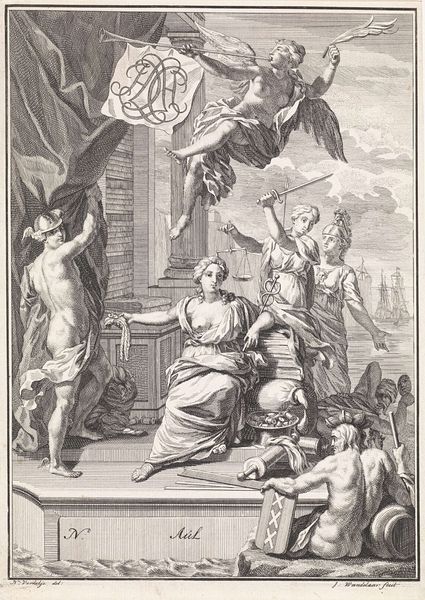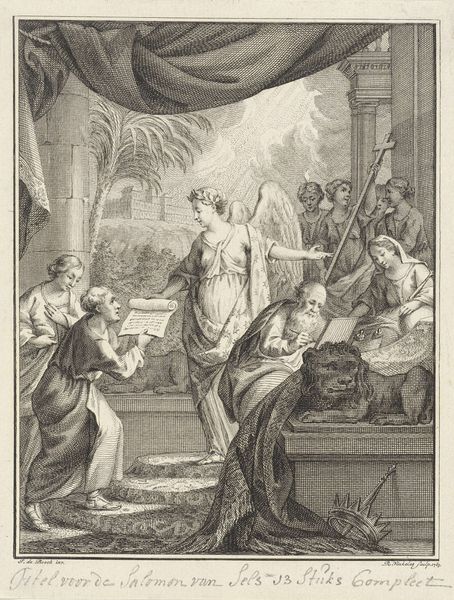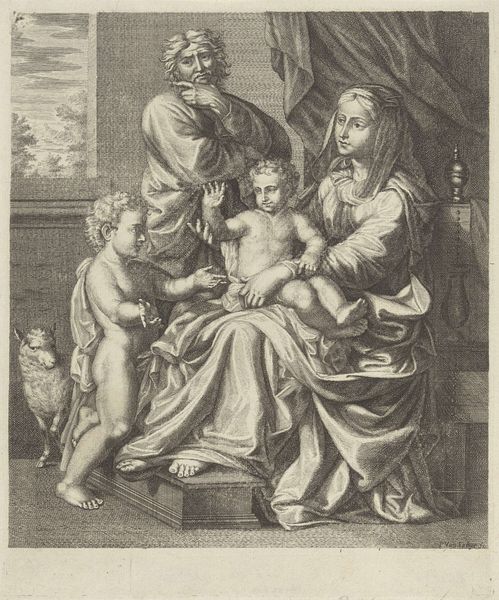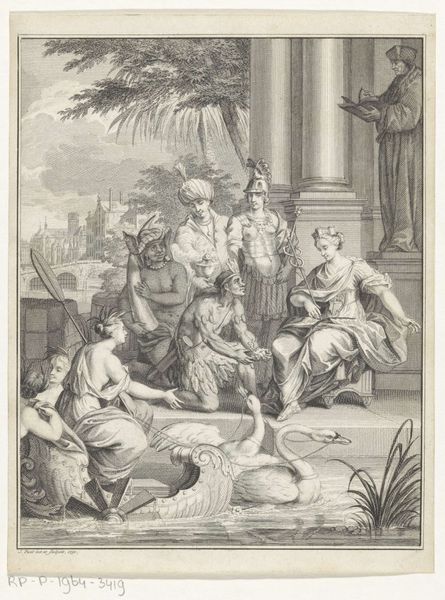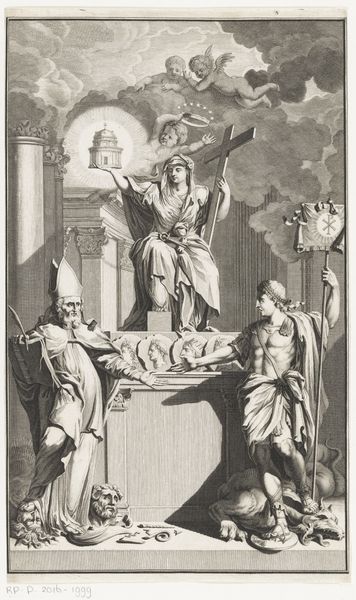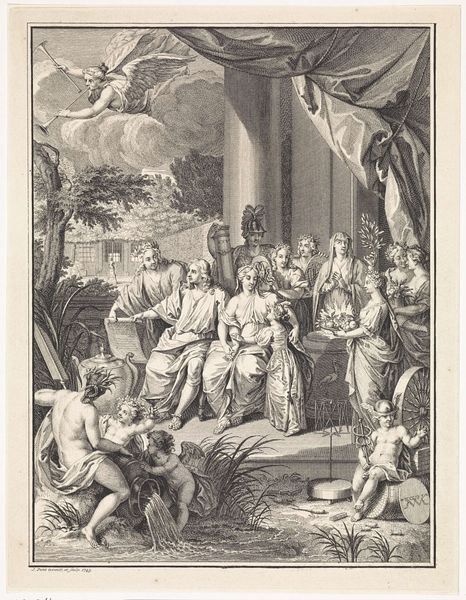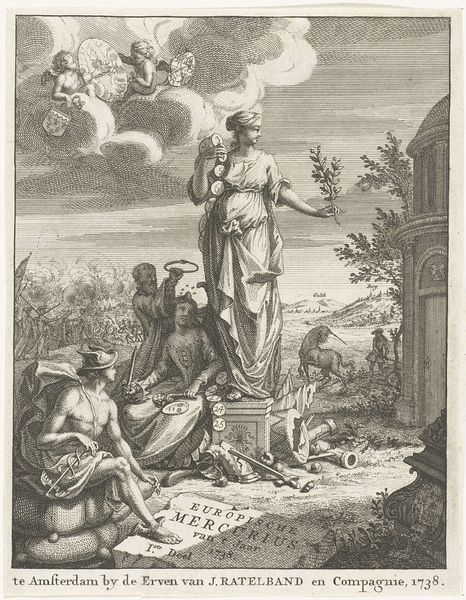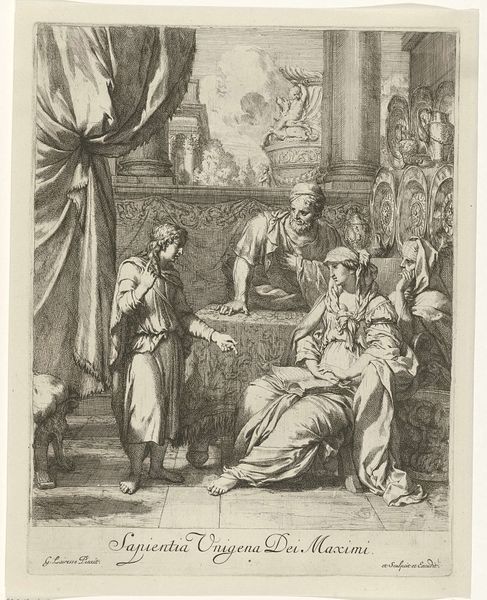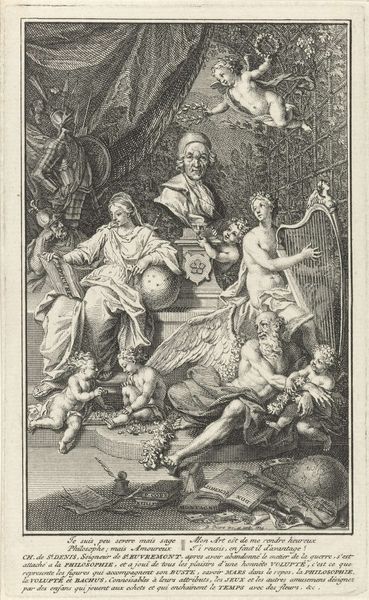
print, engraving
#
allegory
#
baroque
# print
#
pen sketch
#
figuration
#
line
#
engraving
Dimensions: height 159 mm, width 99 mm
Copyright: Rijks Museum: Open Domain
Curator: Jan Punt created this print in 1744. It's called "Allegorische voorstelling met de drie goddelijke deugden" which translates to "Allegorical representation with the three divine virtues." Looking at it, what’s your initial take? Editor: It feels…didactic. The composition is rigid, yet the engraved lines themselves seem so fluid. There's an undeniable Baroque flourish here. But the scene is somber. Almost oppressive. Curator: Allegories often serve as visual lectures, yes. Punt depicts Faith, Hope, and Charity—the three theological virtues—in this piece. See how Faith, on the left, holds a chalice? A classic symbol of communion. And the cross laid at her feet. Editor: It’s like they’ve been discarded. Does that signify waning faith or perhaps trials that require these virtues? That’s a deliberate, challenging statement to make, isn't it? Then Hope—dramatic even seated—brandishes that rather phallic-looking staff! Curator: Its full form is actually a scepter, topped with an image of an all-seeing eye, a symbol of divine providence. Hope directs our gaze towards the heavens. Charity, or love, is nurturing children; its embodiment rooted in care and domesticity. Editor: Those cherubic figures around her are so delicately rendered, there’s life. But Faith's garb is severe, Hope strikes me as more performance, like a declamatory pose, and Charity, I hate to say, is trapped in the well-worn role, defined by domesticity. Does Punt see the divine as constrained by convention? Curator: Baroque art frequently used allegories to promote specific moral values. Punt was perhaps critiquing the established order by depicting virtues tested in this way, while upholding conventional images. Notice the discarded emblems near Faith – wealth and power laid down to accept something greater? He leaves some room to interpretation, no? Editor: You’re right. It's a very cleverly layered thing, both conforming and hinting at… something else. Makes me think differently about Dutch art, maybe. Curator: Indeed. And about the persistent relevance of symbols, and virtues, even when seen through a questioning lens. Editor: And maybe even the limitations of the symbols themselves, for representing the truly ineffable.
Comments
No comments
Be the first to comment and join the conversation on the ultimate creative platform.
